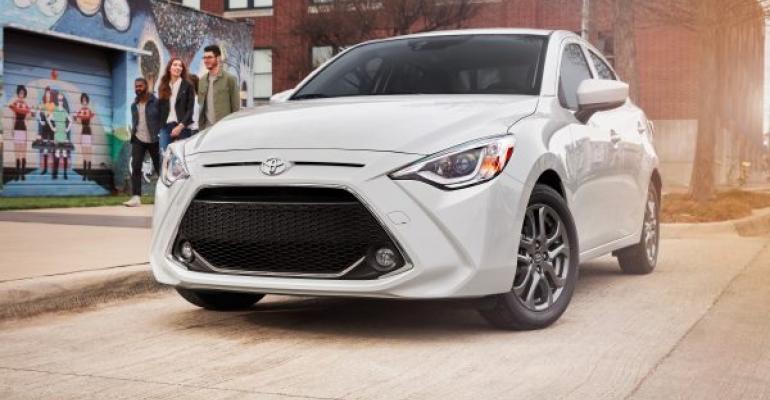People of a certain age sometimes reminisce about their first car.
The way things are going, generations will soon ruminate, not about their first car, but rather their first CUV, SUV or pickup.
That’s because cars are becoming endangered species of sorts.
 “We’ve left cars behind,” Tyson Jominy, J.D. Power’s vice president-data and analytics, says referring to a dramatic switch from cars to light trucks in recent years.
“We’ve left cars behind,” Tyson Jominy, J.D. Power’s vice president-data and analytics, says referring to a dramatic switch from cars to light trucks in recent years.
CUV, SUVs and pickups are at about 75% of market share. Domestic automakers have all but abandoned car segments, except for performance-oriented ones such as the Chevrolet Corvette, Ford Mustang and Dodge Challenger. (Tyson Jominy, left)
Asian automakers still sell cars in the U.S., but even those companies are culling the ranks. (Bid farewell to the likes of the Toyota Yaris subcompact. If Americans are cool toward cars in general, they're arctic icy toward tiny ones.)
“Cars aren’t selling,” Jominy says. “They are disappearing today almost the way body-on-frame utility vehicles disappeared” a few years ago, seemingly overnight, replaced by smoother riding utes with unibody chassis, Jominy says at a J.D. Power webinar.
At one point, U.S. automakers offered small entry-level cars on the premise that first-time buyers would purchase them, become familiar with the brand and stick with it while over the years moving up to more expensive models as their disposable income increased.
Domestic automakers have essentially abandoned that strategy. Now, they are going straight to consumers with wherewithal to purchase higher-priced SUVs, CUVs and pickups that carry heftier profit margins than the razor-thin ones on econobox cars.
The light-trucks are selling fast, despite COVID’s economic challenges. While cars linger on lots “we are almost at the point of when pickups come off the transporter at the dealership, there’s a customer waiting to buy them,” Jominy says, noting the inventory for pickups is a tight 21 days’ supply.
The supposed demise of cars may be exaggerated though.
“Some segments prefer sedans,” says Cox Automotive Chief Economist Jonathan Smoke. “I’d never say we're at the point of the death of sedans.”
Automakers and their dealers sold 5.2 million cars in the U.S. last year compared with 11.4 million light trucks, according to Wards Intelligence.
Cars draw many younger buyers, mainly because of the low price points, Smoke says, adding that, on the other end of the age spectrum, certain older consumers buy cars, too.
“Definitely younger buyers go for sedans,” he says at a recent Society of Automotive Analysts webinar. “Credit plays a role. And cost is a factor.”
Still, IHS Markit analyst Mike Wall predicts a further market migration to CUVs, SUVs and pickups.
“The proliferation of crossovers is off the charts,” he says. “And boy, a lot of product is coming down the pike.”





